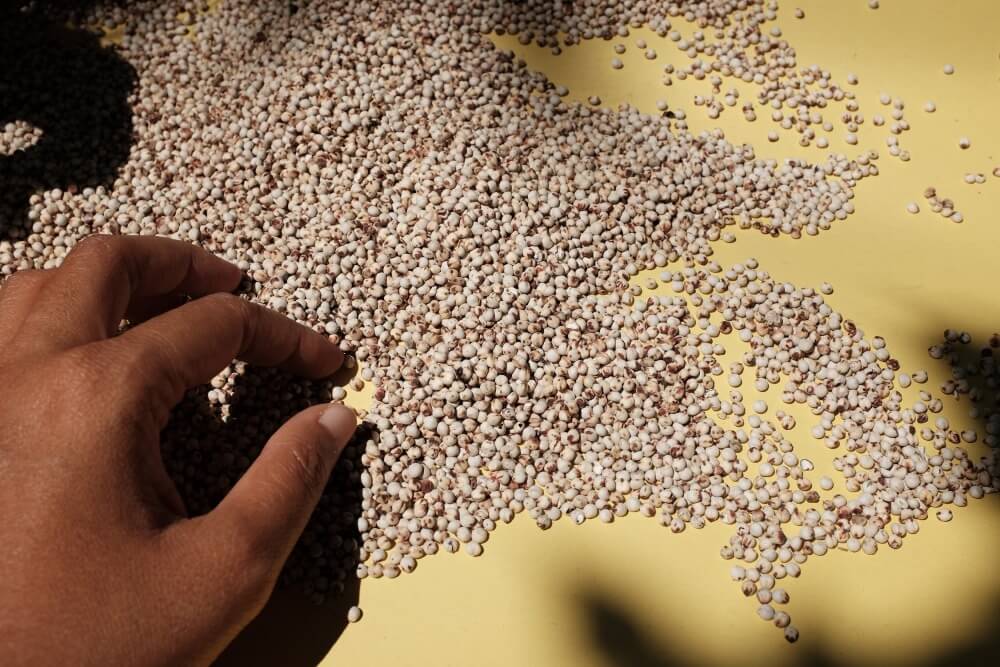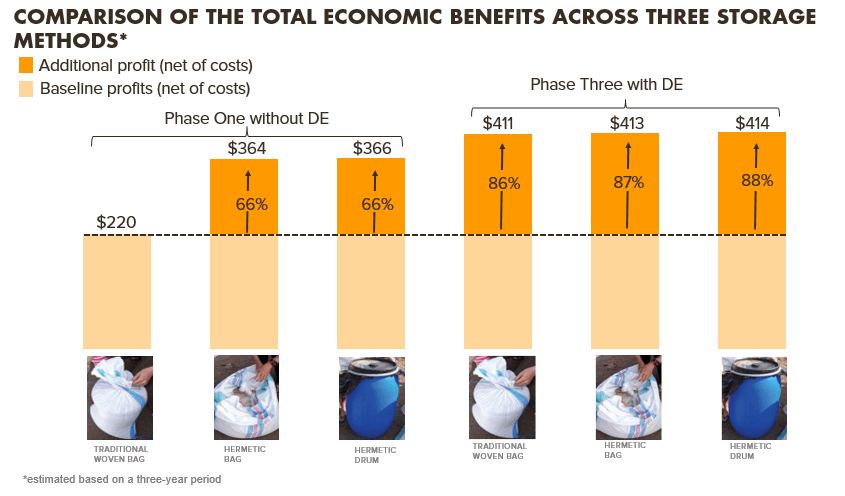
Over the past two years, Kopernik has been experimenting with simple grain storage alternatives to mitigate the issue of post-harvest losses faced by farmers. The first and second phases of the experiment found that storing sorghum in a hermetic drum and keeping it locked for six months was the most effective way to reduce weevil infestation. This method, however, did not provide enough flexibility for farmers to access the grain and required a more costly initial investment, namely the purchase of the hermetic drum. In the third phase of this experiment, we tested the effectiveness of a natural insecticide, a food grade Diatomaceous Earth (DE)1, to reduce the losses while still allowing the farmers to open their storage containers periodically.
Having observed DE’s superior performance with its ability to reduce the number of weevils by up to 98 percent uniformly across all three storage methods (traditional woven sack, hermetic bag, and hermetic drum), we were interested to compare the economic returns of these options and determine which method offered the best return on investment. We conducted a cost-benefit analysis that took into consideration the reduction of grain loss, the cost of DE and the storage container as well as the estimated revenue over a three year period2, we found that once a farmer added DE to the storage container, they could increase their profit by roughly 87% regardless of the storage method used.

Even though the cost between the traditional bag, the hermetic bag, and the drum differed greatly, the higher upfront costs of the hermetic methods, especially the drum, were offset by their longer lifespans. With the addition of DE equalizing the three storage methods’ performance in reducing the number of weevils, their financial returns became almost indistinguishable. This means that as long as the farmers use DE, they can use any of the three storage methods, including continuing to use the traditional method, to gain the same level of profitability.
The current challenge is that despite its great potential, DE is not yet available in remote areas. If you want to know more about the experiment and its findings, you can read the full project report here.
Do you have similar experiences in using natural insecticide to reduce post-harvest losses? We’d love to hear from you.
2. We expanded the net benefit calculation to three years to match the lifespan of the hermetic drum.


